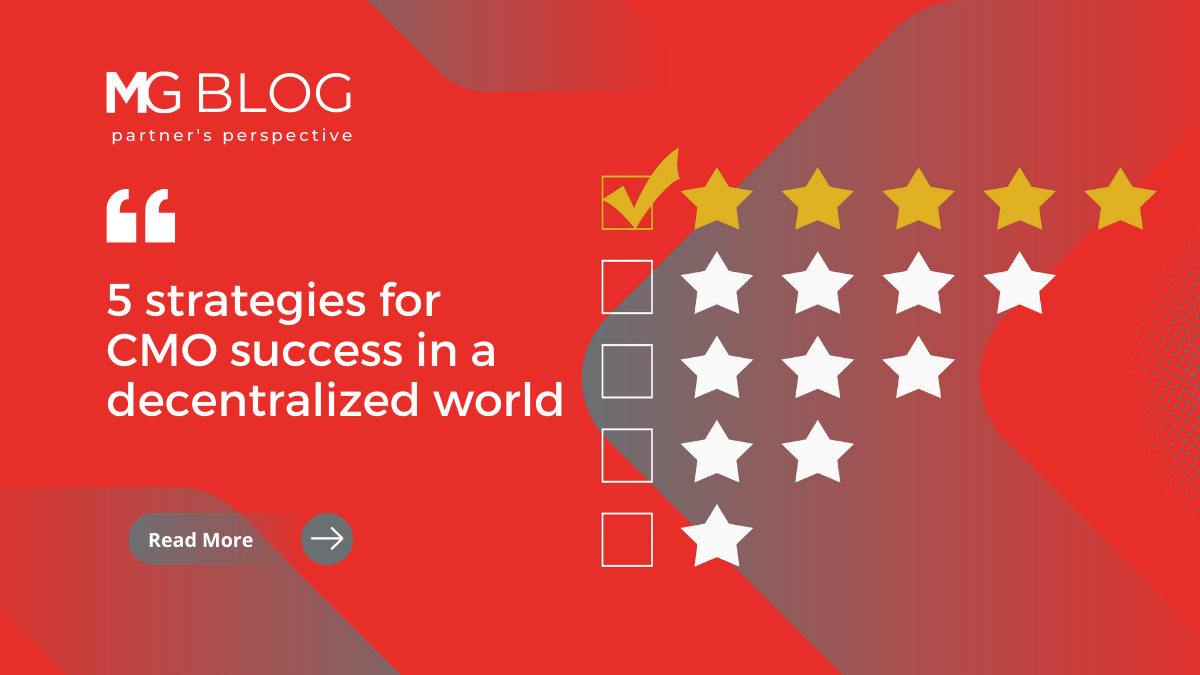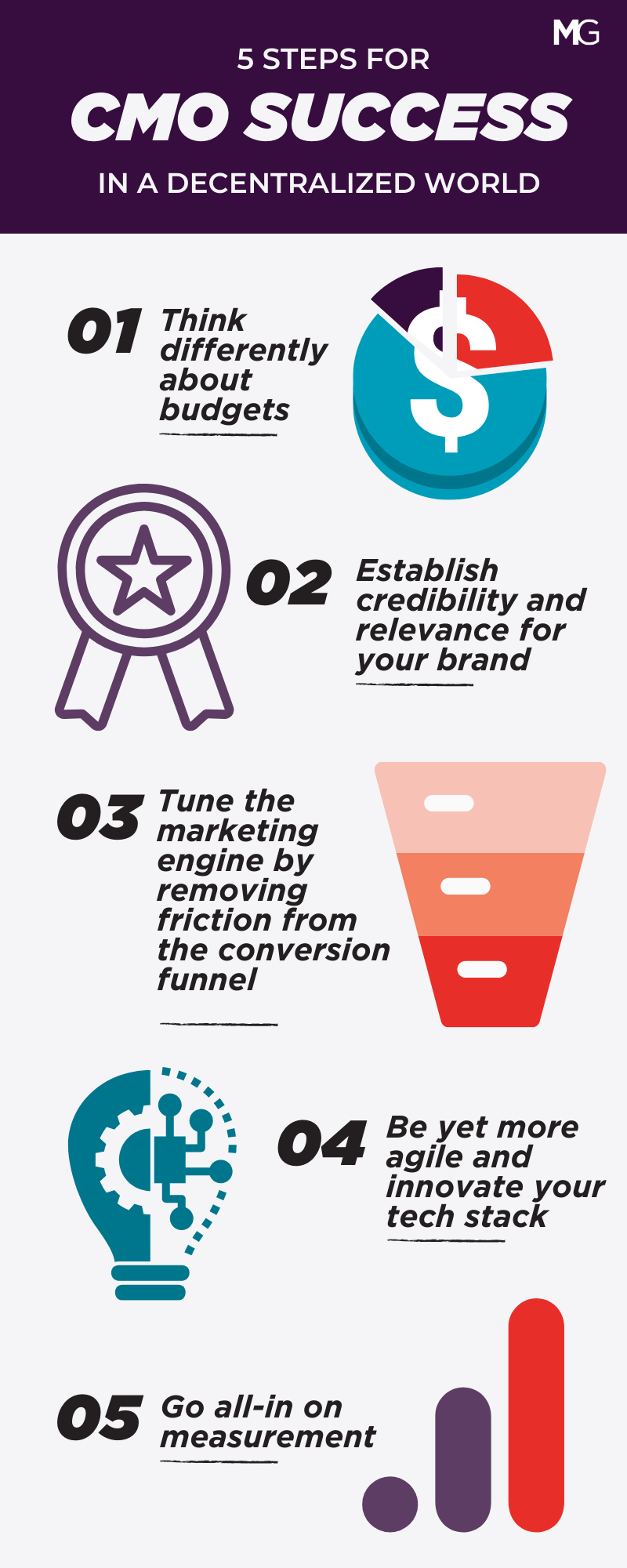
Merritt Group is 25 years old. In this series of posts, our partner team is exploring what’s changed over those 25 years. But more importantly, how marketing leaders can adapt now and in the future.
The decentralization of customer interactions, fueled by the explosion of digital channels, has upended marketing today. Brands are no longer the arbiter of the message – influence has decentralized. B2B brands are simply another voice (hopefully a strong one in their market) in a sea of conversation, interaction and influence. The rise of Web3, where we’re shifting from a read/write internet of websites and social networks to a web built on the blockchain and metaverses of owners and creators, will accelerate this decentralization even further.
The second, and related, challenge is that earning trust in a world of polarization, misinformation and information asymmetry has become much harder for brands. There is no shortage of content and noise, but much of it is ignored. Consumption and engagement means creating meaningful and authentic connections with customers. Study after study makes clear that trust is the single most important brand attribute for B2B buyers now and in the future.
So, the market of buyers is more complex and decentralized, while earning trust is harder than ever. The result is that marketing and sales engines are struggling to keep up, let alone leap ahead of competitors. They’re in a constant state of fixing and rebuilding. And, the mechanics (read: marketers) working on these engines are overwhelmed and exhausted.
I fully realize that I’ve dug up a rather large can of worms. And untangling it all will require lots more discussion. But in the spirit of the premise – sharing meaningful, authentic and useful ideas – I’ve compiled a short list of strategies we’re discussing regularly with our clients.
Here are some steps to take in a world of decentralized influence where trust is at a premium.

- Think differently about budgets. In this anywhere, anyway, and anytime world in which your customers are operating, it’s critical to get the mix of owned content and channels, peer-to-peer content and interaction, display vs traditional vs native advertising, earned and validation media, and influencer marketing just right to meet the consumption habits and journeys of your target market and audiences. Misspending, or overspending, in any of these areas in a way that is misaligned with your customers will lead to inefficiency and eventual loss of market share to more attuned competitors. As always, in a highly dynamic and changing world, whether you’re a mature marketing organization or an emerging one, the strategy should rely on testing, analyzing data and optimizing at speed.
- Establish credibility and relevance for your brand. From products to operations to customer service to marketing and sales, businesses need to assess current brand perceptions and look for ways to create targeted, relevant and personalized interactions with customers. From a marketing perspective, this requires messaging (and content) that clearly shows a deep understanding of and empathy for the pains customers feel and sharing ideas to help solve those challenges. It means listening more to the customer. And, it requires a team, both internal and external to your organization with deep domain expertise, that spends every day working in and thinking about your market, and your customers.
- Tune the marketing engine by removing friction from the conversion funnel. Diagnose your marketing and sales machine: what are the points of friction in the buyer journey? It could be a well-placed link that’s missing from an oft-visited page on your website. It could be establishing a direct line to your leadership team for your customers, to show you truly care. It could be one of the dozens of small things that add up to a major impact on funnel velocity. And, once you’ve removed the friction, look for ways to delight. A personalized thank you email with additional resources when someone downloads an asset on your website. Or, publicly recognizing a customer’s success to show that you care. These small moments of delight can go a long way to establishing lasting customer relationships.
- Be yet more agile and innovate your tech stack. The way your customers consume information and interact with each other (and brands) has been changing for a decade or more, and the pandemic has only accelerated that trend. Now is not the time for marketers to simply hold to traditions that have worked in the past. A larger portion of your time and budget should be spent on innovating the marketing machine. Modernize your infrastructure to power more real-time, personalized and relevant interactions with your customers. And, create a technology roadmap that allows you to bring new digital solutions to market before your competitors.
- Go all-in on measurement. Everything mentioned to this point should generate actionable data. Collect it. Learn from it. Use it to adapt your operations and optimize your customer experience and interactions. Ask yourself this simple question: how much time am I spending building and running campaigns vs. evaluating and optimizing my marketing activities? If your answer is heavily biased toward the former (as most marketing organizations are), change that. Marketers tend to spend a majority of their time doing the work, but very little actually analyzing and optimizing the work.
There is a lot more to say on each topic above (and other related ones), but for now, I’ll stop there. I’d love the opportunity to have a conversation with you about any of these topics. We’re regularly discussing these and others with our clients to help them succeed in this complex and changing world we live in.
